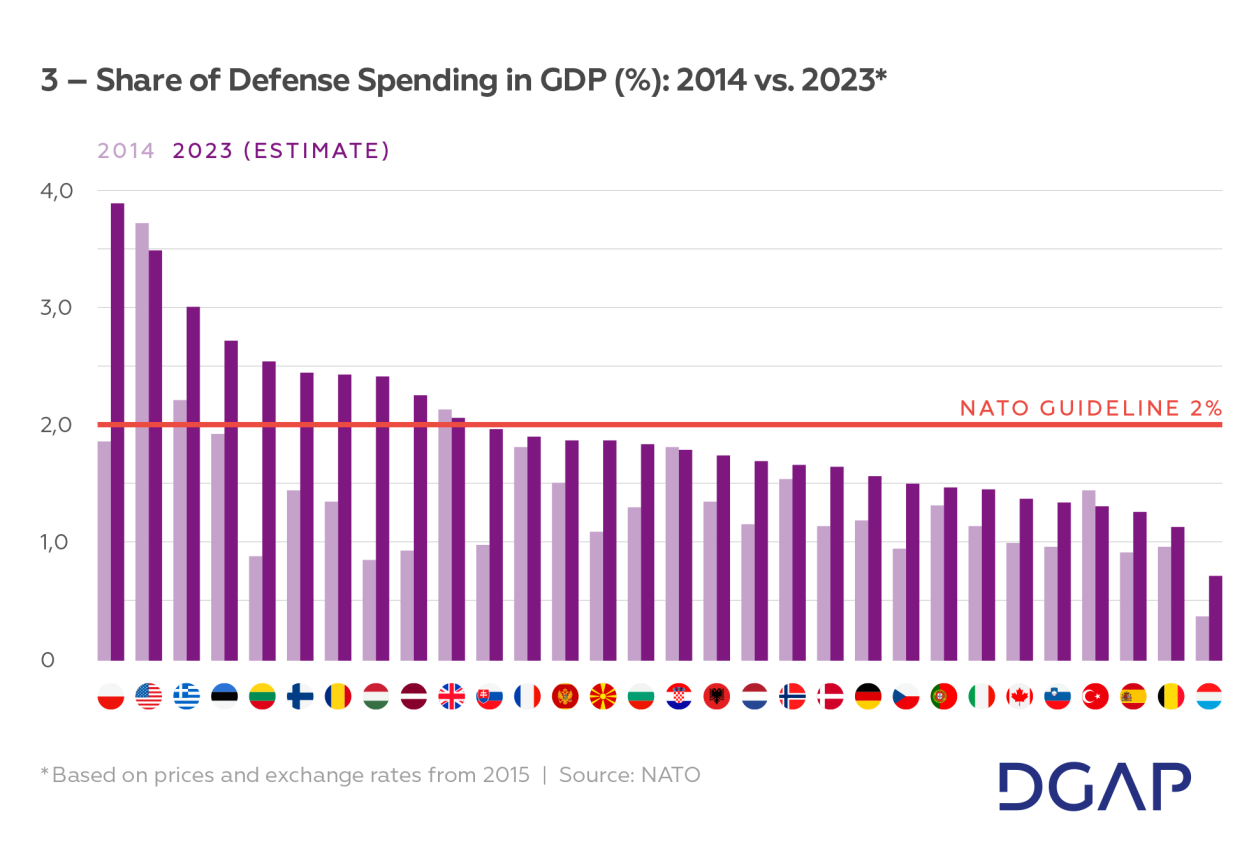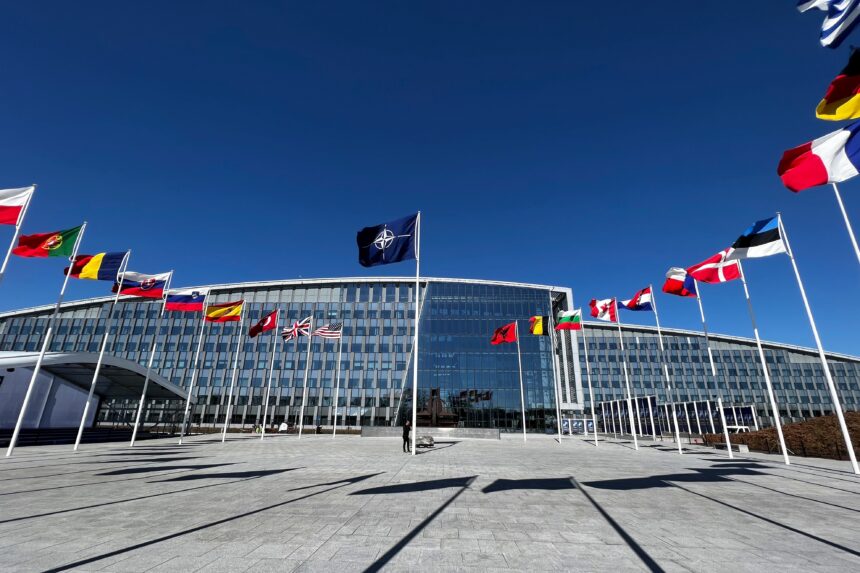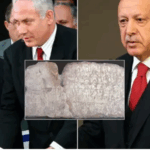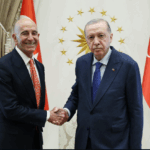Summary by Geopolist | Istanbul Center for Geopolitics:
The DGAP Analysis No. 2 from February 2024, titled “NATO at 75: Time to Deliver on Its Promises,” outlines the key issues and expectations for the upcoming NATO summit in Washington on July 11, 2024. The document discusses the following main points:
- Accession Perspective for Ukraine:
- NATO should provide Ukraine with a clear path to membership, as Ukraine’s resilience against Russian aggression demonstrates its alignment with NATO values and its capability to contribute to the alliance.
- Military Adaptation of the Alliance:
- Continued adaptation and increased defense spending are necessary to counter the Russian threat effectively. Emphasis is placed on achieving the 2% GDP defense spending target.
- Reform of NATO Partnerships:
- A fundamental reform of NATO’s partnership policy is needed, focusing on interest-oriented, hierarchical, and values-based partnerships. This is crucial for addressing future challenges, including those posed by China.
- NATO’s Role on the Southern Flank:
- NATO must balance resources and attention between the eastern and southern flanks, addressing threats like terrorism and migration in the South while maintaining deterrence and defense capabilities against Russia.
- Strengthening of Nuclear Deterrence:
- NATO needs a new political consensus on nuclear deterrence to unify its strategy and address the changed security environment since the last strategy document in 2012.
- Strengthening Transatlantic Relations:
- The summit must address the potential impact of the US presidential election and ensure the resilience of transatlantic relations. Europe should increase its defense capabilities and support NATO partnerships in the Asia-Pacific region.
It emphasizes the importance of addressing these issues to ensure a successful and historic summit that strengthens NATO’s ability to defend its members and maintain global security.
Read the full analysis below.
The key summit topic is likely to be the question of Ukraine’s NATO membership. No common position could be found at the 2023 summit in Vilnius. Even today, NATO is still a long way from unity on the Ukraine issue. However, three factors speak against further procrastination. First,Ukraine’s fight for freedom and democracy demonstrates that it is ready for membership, as it represents the values and goals of the Alliance. Second,Ukraine now has battle-hardened armed forces that can make a significant contribution to its own national defense. Third,Russia is losing more and more soldiers and modern military equipment, which cannot be produced in sufficient quantities due to the international sanctions. In any case, further postponement of the Ukraine issue will hardly be possible given the danger Russia poses and the symbolic significance of the anniversary summit.
NATO had already made fundamental changes to its military planning following Russia’s illegal annexation of Crimea in 2014, as Russia was once again seen as a potential military threat. These plans will also be a summit topic in 2024, as military adaptation requires considerable financial resources. For years, many NATO members have ignored their promise to spend two percent of their gross domestic product (GDP) on defense, including Germany.However, as a result of the Russian invasion of Ukraine and the ensuing change of times, or “Zeitenwende,” the German government has set the course for meeting the two percent target in the future. For member states still falling short of a sufficient contribution to defense, this target must be repeatedly addressed and emphasized at the highest political level. Only through such “blaming and shaming” can sufficient political pressure be brought to bear.
Another recently neglected area of NATO is partnership policy. This will become even more important in the future, as the next challenge already lurks behind the Ukraine conflict, namely, an increasingly aggressive China. If partnerships are to be used sensibly in the future, a fundamental reform is required. Germany already developed initial ideas for a reorganization of partnerships at the beginning of 2023. This was based on three considerations: First,NATO partnerships must be fundamentally interest-oriented and viewed from the perspective of usefulness for both sides. Second, partnershipscannot be free of hierarchies. Partners are relevant in different ways due to their geostrategic location, political system or contributions. Third, as the Alliance is a values-based community, special importance should be attached to democratic states. If the heads of state and government in Washington ignite a reform of partnerships along these basic lines, this can strengthen NATO as a whole.
For years, there has been an East-South divide in the Alliance. While the Northern and Eastern Europeans point to the Russian threat as the Alliance’s primary area of action, southern neighbors such as Italy, Spain, Greece, Turkey, and France fear too many resources are being devoted to the eastern flank and that their threat perceptions in the South are not sufficiently appreciated. To alleviate this tension, NATO has long spoken of a “360-degree approach” to address the concerns of all members. However, the threat from Russia is a military one that can be countered primarily by military means, i.e. through deterrence and defense capabilities. This is NATO’s core competence. In contrast, threats from the South, such as terrorism or migration, are primarily socio-economic problems for which NATO can at best provide support. Even if these problems are discussed at the summit in Washington, it must be clear that solving them in a way that satisfies everyone will be difficult.
In view of the threat from Russia, the Alliance has strengthened its nuclear capabilities, but has not yet dealt with the issue of strategy. The last nuclear strategy document in which NATO agreed on a common deterrence logic was the Deterrence and Defence Posture Review (DDPR) of 2012, adopted in Chicago. However, the international security situation at that time was fundamentally different. Russia was still considered a NATO partner, China was perceived as fundamentally benevolent, and the illusion of an Arab Spring still prevailed in the Middle East. This shows that NATO urgently needs a new political consensus paper to unite the different ideas on deterrence and the role of nuclear weapons in the Alliance under one strategic umbrella. The upcoming Washington summit would provide the right framework to start formulating this strategy.
At the time of the summit, political Washington will be dominated by the US presidential election campaign and a possible second presidential term for Donald Trump. Trump recently threatened to not defend NATO allies against attack from Russia. This scenario is triggering existential fears in the Alliance, which is why the summit must focus, among other things, on making transatlantic relations “Trump-proof.” Beyond the prospect of a Trump presidency, NATO members must defuse transatlantic points of contention and reach agreement on at least two issues. On the one hand,Europe must significantly increase its military capabilities through higher defense budgets. On the other,Europe must pay more attention to the threats in the Asia-Pacific region and focus on two areas. First, it should contribute to the further development of NATO partnerships with the Asia-Pacific Four (AP-4): Australia, Japan, New Zealand, and South Korea. Second, the Europeans can take on more military tasks in their own neighborhood so US armed forces can devote more time to the Asia-Pacific region.
If the heads of state and government want to do justice to the seriousness of the situation at the NATO summit in Washington, they must make far-reaching decisions in the areas mentioned. Only a prioritization of these issues will lead to a concise and strong summit declaration. If this succeeds, the Washington summit can become as historic as it is being portrayed in advance.








